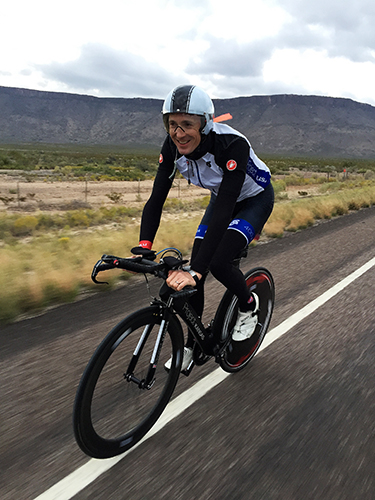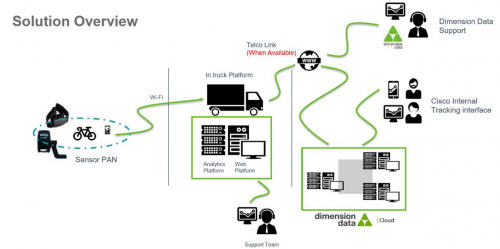
This is part of the Project Kansas blog series, click here to read all about our involvement.
Ultra-endurance events are a huge endeavour for most professional athletes. Race Across America (RAAM) is one of those that allows all abilities from amateur athletes to take part. So, how could technology and the Internet of Things help Cisco’s participant James to compete and succeed in one of the world’s toughest bike races.
Most training aids today provide post-event data that can be tracked over time. As RAAM is one long continuous event, recovery time is limited to a few hours each day. Most riders will be stopping to look at snap shot data within their rest points. This lacks the real-time needed action to take appropriate measures to achieve the best possible time. James is doing his race a little differently. The ability to receive real-time performance data, continuously being analysed by the support team, (all the while James is still riding the bike) will enable the team to guide James, and advise him on what he needs to do to achieve optimum performance.

How do we do this we hear you ask? Cisco synced up our technology partner Dimension Data, to understand how we could work together, and harness the power of the Internet of Things to provide near to real-time data.
Using sensors, placed on both James and the bike, that connect to a phone using standard communication technologies such as ANT+ and Bluetooth Low Energy (BLE), we will be tracking in near real time:
- GPS
- Cadence
- Speed
- Heart Rate
With the addition of environmental data:
- Route
- Gradient of the terrain
- Wind speed
- Ambient temperature
As well as all the other physiological parameters:
- Rider core temperature
- Fluid and calorie intake
- Blood sugar levels
- Quantity of rest
- Calories burned
After gathering all that information, the next challenge is to make it available to the support team; and if necessary, to sports scientists anywhere in the world for them to analyse and provide advice and guidance back to James.
Using the Internet of Things we can optimise the performance continuously throughout the event and therefore make informed, data driven decisions on how to manage the entire race.
Want to see the solution? Look below for the diagram that shows how this will all fit together.
Follow the team on Facebook, Twitter and our website projectkansas.org
3 Comments




Great stuff. I’m interested in how you are collecting the blood sugar levels? I have a son with Type 1 diabetes and he loves his sport. It would be really cool to be able to collect his blood sugar levels in a similar fashion before, during and after sport. This information would then be used to assist in planning around diet, rest, recovery, ec.
Hi Adam. the blood sugar was measured in the normal way – with a needle prick. There are automated systems that use needles semi permanently inserted in the skin around the stomach and it send the reading wirelessly but we didn’t need to go that far and anyway, it sounded pretty uncomfortable when in a cycling position! There are new sensors coming out all the time so perhaps you could keep an eye out. For example there is now a wearable system that detects blood oxygen using light and also blood lactate using a pad that sticks to your skin. Both examples of recent improvements in this area.
All the best everyone this is were all your hard work will pay off.